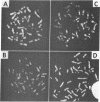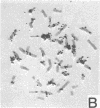Abstract
Fluorescence of the dye 33258 Hoechst bound to chromosomes is partially quenched by the introduction of BrdU into chromosomal DNA. This finding has allowed microfluorometric detection of DNA synthesis in human metaphase chromosomes. Incorporation, shortly before cell harvest, of a pulse of thymidine into chromosomes otherwise substituted with BrdU results in sharply defined foci of bright 33258 Hoechst fluorescence, corresponding to regions of late DNA replication. The latereplicating X chromosome can thereby be clearly identified, and the time course of appearance of its fluorescent bands can be compared with that of its earlier replicating homologue. Growth of cells in medium containing BrdU for two generations allows fluorometric documentation of the semiconservative distribution of newly replicated DNA between sister chromatids, and regions of sister chromated exchange are demarcated. This approach should constitute, in many instances, a convenient, high-resolution fluorometric alternative to autoradiography.
Keywords: 33258 Hoechst, BrdU-dependent fluorescence, metaphase chromosome staining, autoradiography
Full text
PDF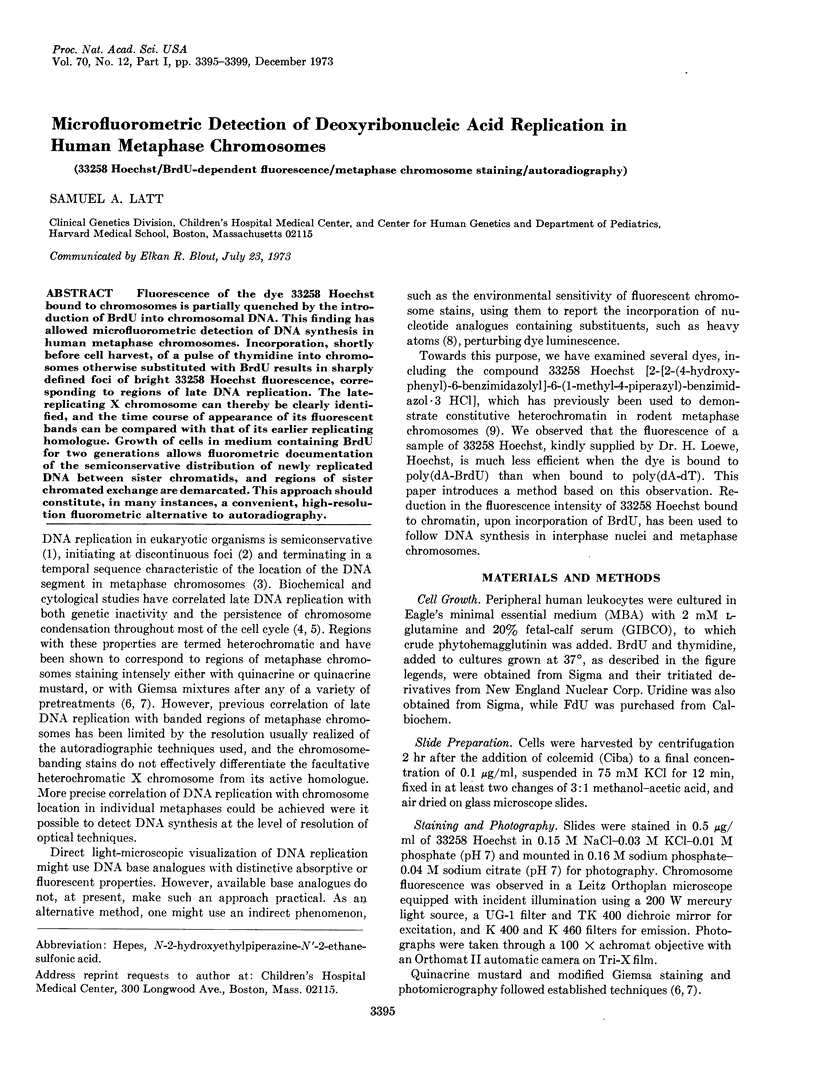
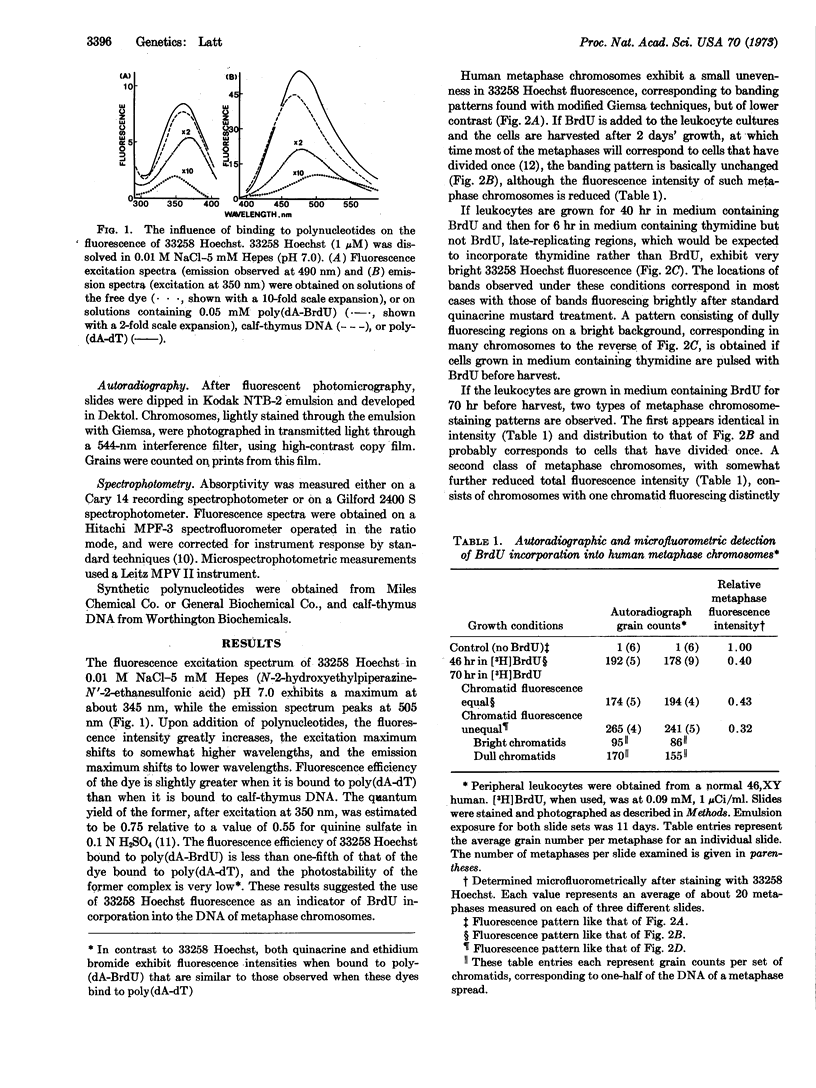
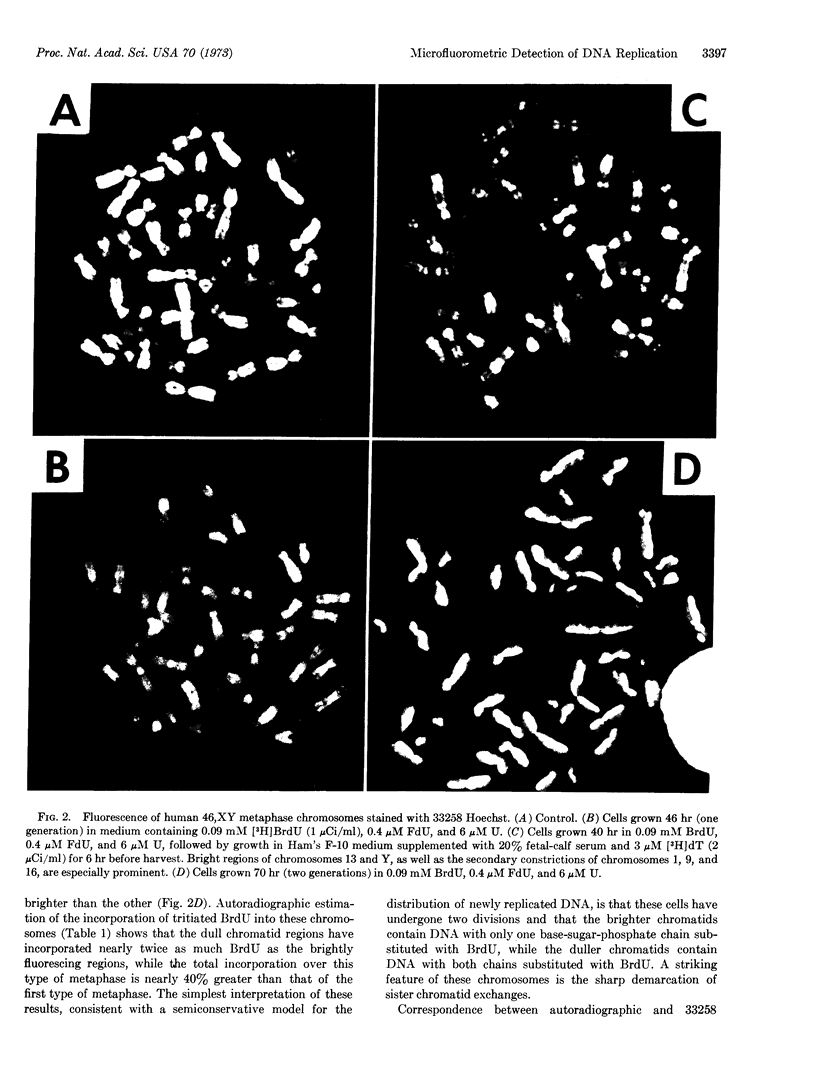
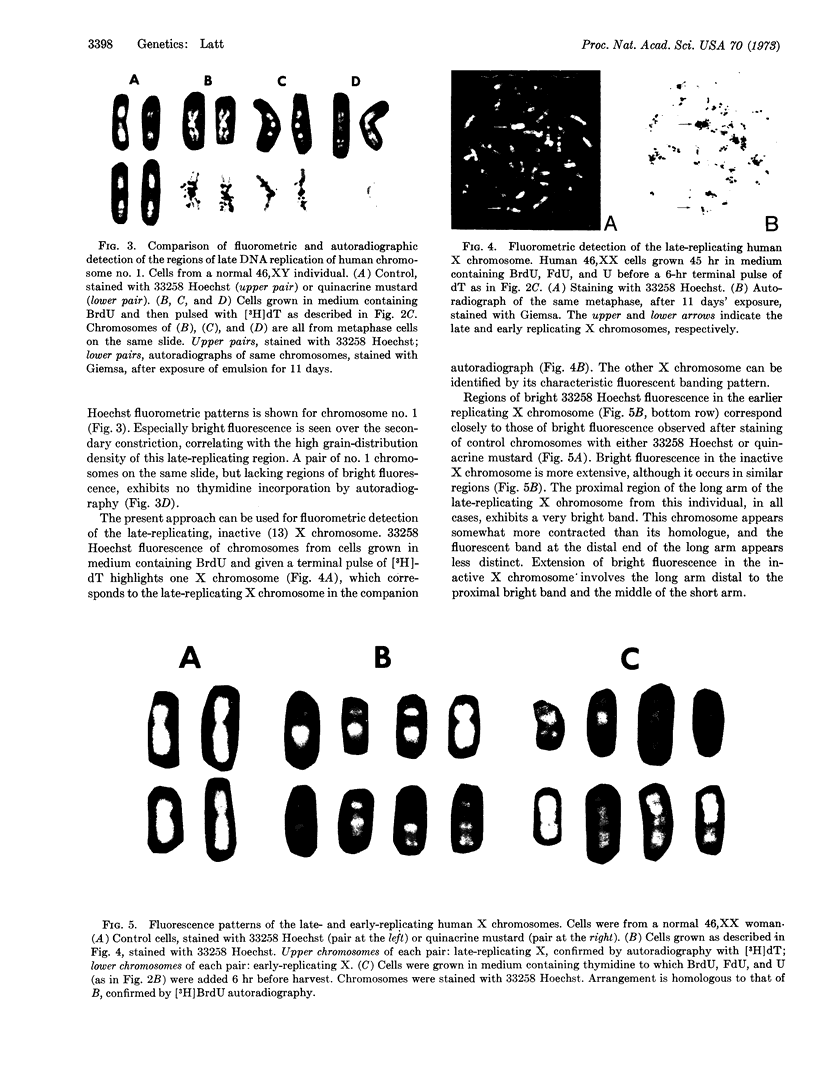
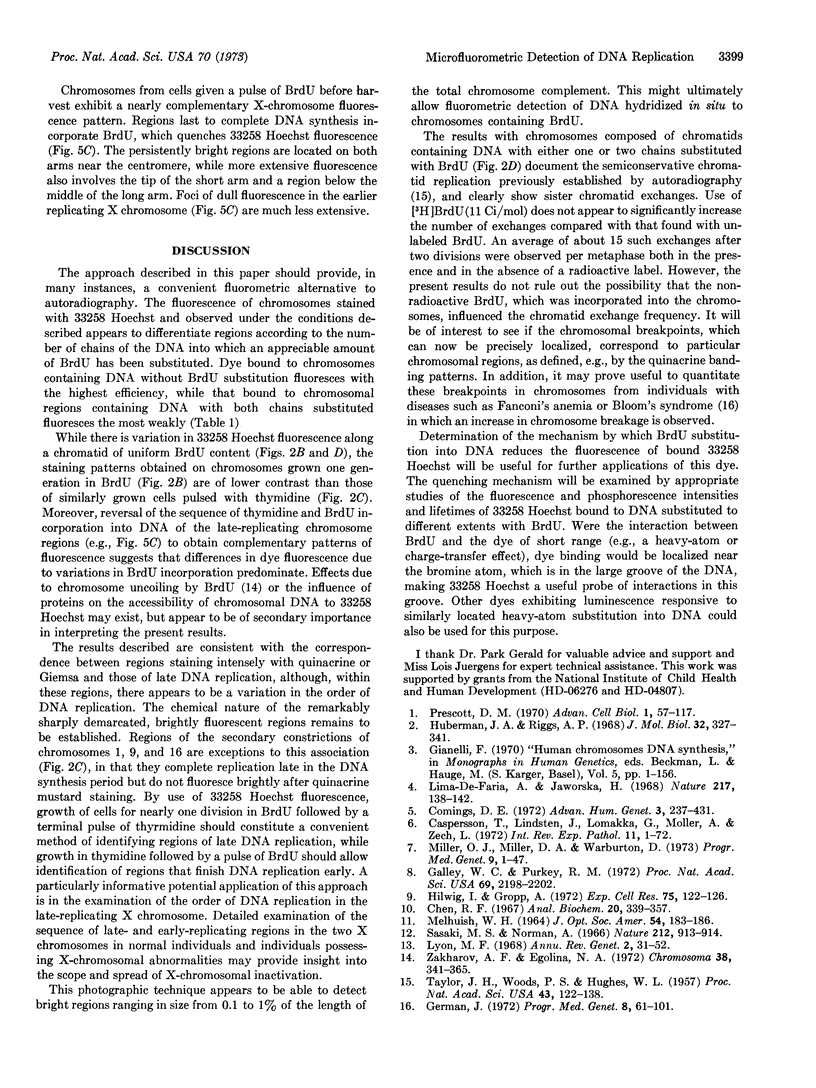
Images in this article
Selected References
These references are in PubMed. This may not be the complete list of references from this article.
- Caspersson T., Lindsten J., Lomakka G., Moller A., Zech L. The use of fluorescence techniques for the recognition of mammalian chromosomes and chromosome regions. Int Rev Exp Pathol. 1972;11:1–72. [PubMed] [Google Scholar]
- Chen R. F. Practical aspects of the calibration and use of the Aminco-Bowman spectrophotofluorometer. Anal Biochem. 1967 Aug;20(2):339–357. doi: 10.1016/0003-2697(67)90040-1. [DOI] [PubMed] [Google Scholar]
- Comings D. E. The structure and function of chromatin. Adv Hum Genet. 1972;3:237–431. doi: 10.1007/978-1-4757-4429-3_5. [DOI] [PubMed] [Google Scholar]
- Galley W. C., Purkey R. M. Spin-orbital probes of biomolecular structure. A model DNA-acridine system. Proc Natl Acad Sci U S A. 1972 Aug;69(8):2198–2202. doi: 10.1073/pnas.69.8.2198. [DOI] [PMC free article] [PubMed] [Google Scholar]
- Hilwig I., Gropp A. Staining of constitutive heterochromatin in mammalian chromosomes with a new fluorochrome. Exp Cell Res. 1972 Nov;75(1):122–126. doi: 10.1016/0014-4827(72)90527-7. [DOI] [PubMed] [Google Scholar]
- Huberman J. A., Riggs A. D. On the mechanism of DNA replication in mammalian chromosomes. J Mol Biol. 1968 Mar 14;32(2):327–341. doi: 10.1016/0022-2836(68)90013-2. [DOI] [PubMed] [Google Scholar]
- Miller O. J., Miller D. A., Warburton D. Application of new staining techniques to the study of human chromosomes. Prog Med Genet. 1973;9:1–47. [PubMed] [Google Scholar]
- Sasaki M. S., Norman A. Proliferation of human lymphocytes in culture. Nature. 1966 May 28;210(5039):913–914. doi: 10.1038/210913a0. [DOI] [PubMed] [Google Scholar]
- Taylor J. H., Woods P. S., Hughes W. L. THE ORGANIZATION AND DUPLICATION OF CHROMOSOMES AS REVEALED BY AUTORADIOGRAPHIC STUDIES USING TRITIUM-LABELED THYMIDINEE. Proc Natl Acad Sci U S A. 1957 Jan 15;43(1):122–128. doi: 10.1073/pnas.43.1.122. [DOI] [PMC free article] [PubMed] [Google Scholar]
- Zakharov A. F., Egolina N. A. Differential spiralization along mammalian mitotic chromosomes. I. BUdR-revealed differentiation in Chinese hamster chromosomes. Chromosoma. 1972;38(4):341–365. doi: 10.1007/BF00320156. [DOI] [PubMed] [Google Scholar]



